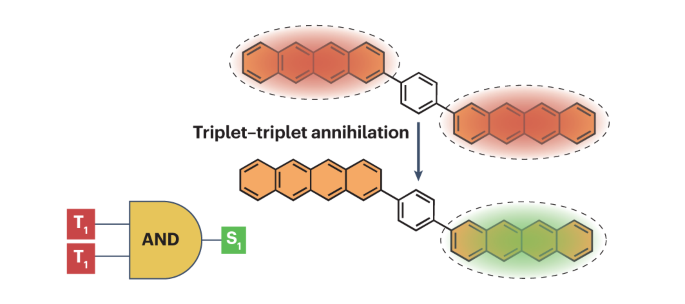2024-01-31 オーストラリア連邦研究会議(ARC)
◆励起子の高速な論理操作により、現代コンピュータよりもはるかに高速なデバイスが構築でき、有機半導体を使用するためバイオコンパチブルな医療機器への応用も期待される。励起子論理は量子励起子コンピューティングなど他の形式にも展開可能。
<関連情報>
- https://excitonscience.com/news/faster-smaller-biocompatible-excitonic-logic-could-supercharge-computing
- https://www.nature.com/articles/s41570-023-00566-y
多励起子論理のフレームワーク A framework for multiexcitonic logic
Rohan J. Hudson,Thomas S. C. MacDonald,Jared H. Cole,Timothy W. Schmidt,Trevor A. Smith & Dane R. McCamey
Nature Reviews Chemistry Published:25 January 2024
DOI:https://doi.org/10.1038/s41570-023-00566-y
Abstract
Exciton science sits at the intersection of chemical, optical and spin-based implementations of information processing, but using excitons to conduct logical operations remains relatively unexplored. Excitons encoding information could be read optically (photoexcitation–photoemission) or electrically (charge recombination–separation), travel through materials via exciton energy transfer, and interact with one another in stimuli-responsive molecular excitonic devices. Excitonic logic offers the potential to mediate electrical, optical and chemical information. Additionally, high-spin triplet and quintet (multi)excitons offer access to well defined spin states of relevance to magnetic field effects, classical spintronics and spin-based quantum information science. In this Roadmap, we propose a framework for developing excitonic computing based on singlet fission (SF) and triplet–triplet annihilation (TTA). Various molecular components capable of modulating SF/TTA for logical operations are suggested, including molecular photo-switching and multi-colour photoexcitation. We then outline a pathway for constructing excitonic logic devices, considering aspects of circuit assembly, logical operation synchronization, and exciton transport and amplification. Promising future directions and challenges are identified, and the potential for realizing excitonic computing in the near future is discussed.




